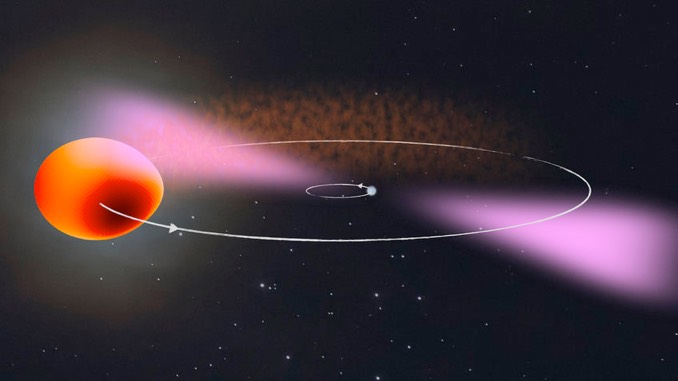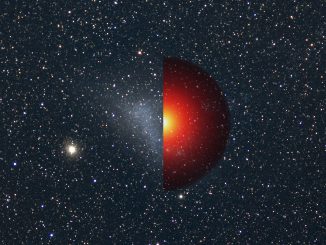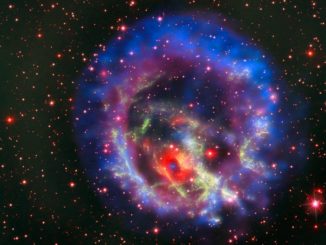
Using the computing power of the citizen-science project Einstein@Home to analyse data from NASA’s Fermi Space Telescope, researchers have identified a rapidly spinning pulsar, a so-called “black widow,” that is slowly but surely evaporating a companion star
A paper in Monthly Notices of the Royal Astronomical Society describes the analysis, showing the spinning neutron star, otherwise known as a pulsar, is spinning at 377 times per second. The findings were made possible by the Einstein@Home project, a volunteer network of thousands of home computers that, when idle, sifted through years of Fermi data.
According to the University of Manchester, which participated in the research, the analysis would have taken 500 years to complete using a single computer core. Using the Einstein@Home network, it was done in just two months.
“It had been suspected for years that there is a pulsar, a rapidly rotating neutron star, at the heart of the source we now know as PSR J2039-5617,” said Lars Nieder, a Ph.D. student at the Max Planck Institute for Gravitational Physics in Hannover. “But it was only possible to lift the veil and discover the gamma-ray pulsations with the computing power donated by tens of thousands of volunteers to Einstein@Home.”
PSR J2039-5617 was a known source of X-rays and gamma rays and astronomers suspected the presence of a pulsar in a binary system. But evidence to confirm that proved difficult.
As it turns out, the pulsar is slowly destroying the companion star, which is about one-sixth as massive as the Sun. The two complete one orbit of each other every 5.5 hours and the brightness of the companion varies depending on where it is in the orbit.
“For J2039-5617, there are two main processes at work,” said lead author Colin Clark of the Jodrell Bank Centre for Astrophysics. “The pulsar heats up one side of the light-weight companion, which appears brighter and more bluish. Additionally, the companion is distorted by the pulsar’s gravitational pull causing the apparent size of the star to vary over the orbit.
“These observations allowed the team to get the most precise measurement possible of the binary star’s 5.5-hour orbital period, as well as other properties of the system.”



